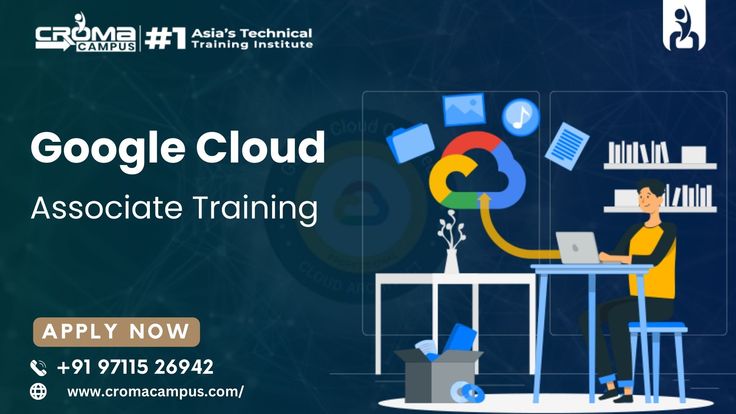Cloud computing has completely changed how companies run. The cloud has developed into a vital resource for innovation, providing everything from on-demand scalability to the capacity to support distant workers.
However, the adventure doesn’t end there. Now, generative AI (artificial intelligence) and cloud computing are getting connected, bringing in a new era of “smarter” invention that is full of opportunities, faster, more efficient, and full of possibilities.
Let’s explore how generative AI-powered hybrid cloud solutions are radically altering the innovation environment for companies of all sizes.
Explaining Hybrid Cloud and Generative AI
Let us look at the distinct benefits of each of these technologies separately before exploring the magic of their combination:
- Hybrid cloud computing
This adaptable strategy combines the cost-effectiveness and scalability of a public cloud with the security and management of a private cloud. Businesses can leverage the best of both worlds by keeping important data locally and using the public cloud for resource-intensive tasks.
High-performance Ethernet adapters enable fast, secure connections that guarantee seamless data transfer between various environments.
- Generative AI
With the use of a set of training data, machines can now produce completely original text, graphics, and code thanks to a cutting-edge technique called generative artificial intelligence (AI).
Consider an AI that, given a basic description, is capable of designing a new product prototype, producing persuasive marketing copy, or even writing code.
Now, magic happens when we combine hybrid cloud solutions with generative AI. Consider a situation in which you are creating a new product. Your hybrid cloud environment allows you to upload your current product data and market research. Here’s where generative AI comes into play:
1. Automated ideation
After data analysis, the AI comes up with a ton of possible features, advertising strategies, or even completely new product concepts. This gets rid of creative obstacles and generates novel concepts you would not have thought about.
2. Rapid prototyping
For rapid prototyping, the AI can produce code snippets, design mockups, or even 3D models based on the selected concept. This enables quicker iteration cycles and drastically cuts down on development time.
3. Predictive analytics
The AI can forecast the potential success of your new product by examining consumer behavior and market trends stored in the cloud. This enables you to reduce risks and make data-driven decisions before to making significant development investments.
These are but a handful of instances. With hybrid cloud and generative AI, the possibilities are virtually limitless.
How Generative AI and Hybrid Cloud Drive Smarter Innovation
Let’s now investigate how these technologies interact to produce a more intelligent innovation ecosystem:
1. Revolutionizing R&D
The conventional approach to research and development can be labor- and resource-intensive. One way that generative AI can expedite this process is by:
- Creating new material designs: providing information about the characteristics of current materials to a generative AI model. Subsequently, the AI might create whole new material compositions with the required properties, hastening the search for novel materials in industries like aerospace and clean energy.
- Complicated system simulation: Realism-based simulations of complicated phenomena can be produced through the application of generative AI. By simulating the effects of novel drug candidates on virtual patients, for instance, a pharmaceutical corporation can eliminate the need for costly and time-consuming real-world studies.
2. Content Creation on Autopilot
Companies in a variety of sectors struggle with the ongoing need to provide interesting and original content. Generative AI can alter this process by:
- Automating the creation of content: Consider using AI to create social media posts, product descriptions, or marketing text. Human resources can be allocated to more strategic duties by using generative AI to develop content according to predetermined rules and brand voice.
- Personalization at Scale: Using customer-specific data, generative AI may tailor product recommendations or marketing material. This degree of customization has the power to greatly increase conversions and improve consumer engagement.
3. Streamlining Business Procedures
Repeated tasks and manual data analysis can be detrimental to productivity. Solutions provided by generative AI include:
- Automating Routine tasks can be automated with generative AI, freeing up human labor for higher-value work. Reports, invoices, and meeting schedules can all be generated automatically.
- Predictive analytics: Generic AI can find patterns and forecast future trends through the analysis of large datasets. This enables companies to improve resource allocation, make data-driven decisions, and reduce potential risks.
4. Enhancing Data Management and Security
In the digital age, data security is crucial. Generative AI provides creative solutions for:
- Proactive Threat Detection: It is possible to find security threats before they become more serious by using generative AI models to detect unusual patterns in system logs or network traffic.
- Data Anonymize Generative AI can be used to anonymize data sets while maintaining their statistical features, which is useful for firms handling sensitive data. This makes it possible to work with other parties and share data securely.
Practical Issues to Take into Account
Though generative AI and hybrid cloud seem to have endless potential, there are a few important factors to take into account for successful implementation:
- Governance and Data Security
It is crucial to protect your data’s security and privacy when using generative AI. With hybrid cloud architectures, companies can use the public cloud for AI operations while maintaining sensitive data on-site. Furthermore, to reduce prejudice and guarantee ethical AI research, strong data governance laws are essential.
- Developing the Appropriate AI Skills
Effective generative AI integration calls for a certain degree of skill. Companies have the option to work with AI service providers in partnership or create their own AI teams. Having the appropriate expertise in place is essential to realizing the full potential of generative AI, regardless of the strategy.
- Bringing About Change and Building Trust
Concerns can arise in the workforce with the adoption of AI. Enterprises must proficiently convey the advantages of artificial intelligence and its function in enhancing human skills rather than supplanting them. To guarantee a smooth transition, it is essential to establish trust and offer training opportunities.
The Bottom Line
You can fully utilize the potential of these great technology partners and place your company at the forefront of innovation by following these steps. Make sure that the future of innovation depends on producing things more quickly and intelligently rather than merely inventing them from scratch. You can accomplish that with the help of generative AI and hybrid clouds.


